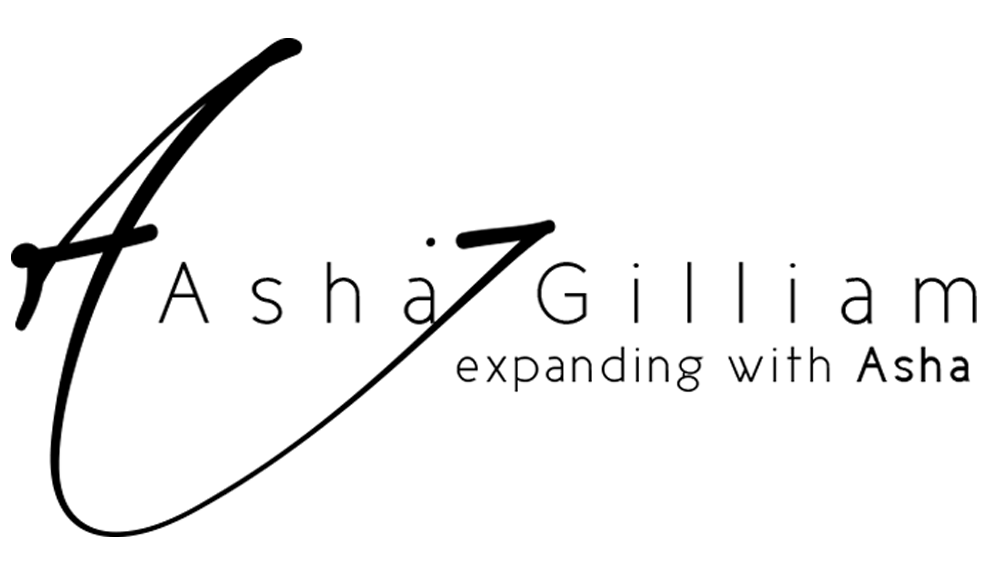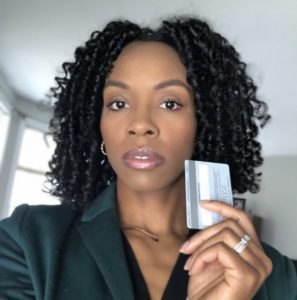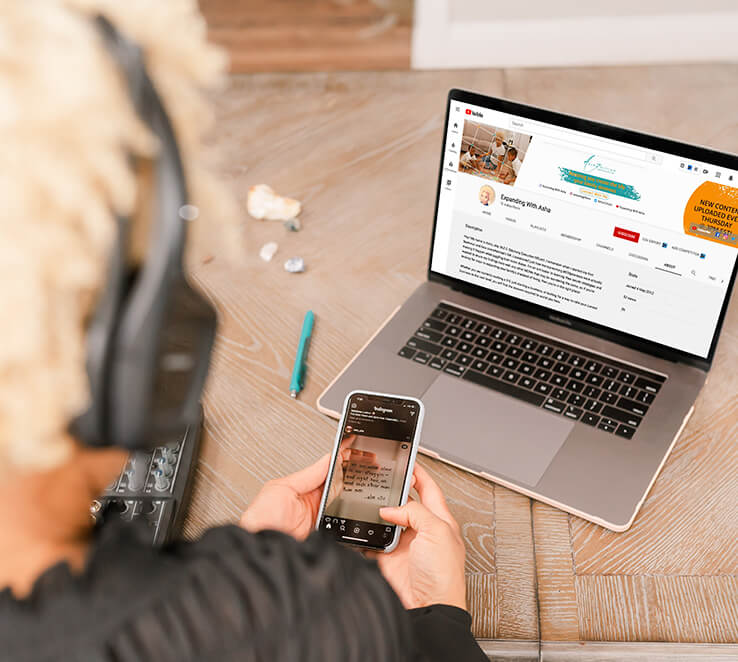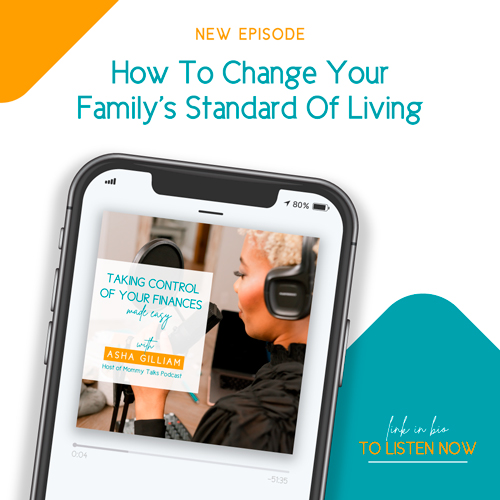MOMMY TALKS PODCAST Episode 16
- MOMMY TALKS PODCAST
Sarry Ibrahim, MBA, LTCP, Bank On Yourself® Professional, CEO and President of finassetprotection.com, touches on the bank on yourself concept, and gives very detailed insight to what it could mean for one’s family by aligning with a professional who specializes in this concept.

When Did You First Become Interested In What You do? Why?

This all started a couple years ago. I was essentially a Medicare consultant. I had been helping retirees, between the ages of 64-65 years old, who were leaving their employer plans and joining their own individually owned Medicare plans.
It was while helping them make those transitions that one of my clients asked me if I could help him with life insurance. He mentioned there was a life insurance product that had cash-value that built up in it, but I wasn't really sure what he was talking about, so I told him I would do more research for him.
And I did. I went to Amazon and I searched for books about life insurance, and I came across this one book called, "The Bank On Yourself Revolution," by Pamela Yellen. The book talks about The Bank On Yourself Strategy, which is the ability to grow wealth while still being able to use it at the same time and have those dollars be used for whatever it is that you want.
As I was reading this book, I thought this is very applicable, not just to my Medicare client that I wanted to help but also to anybody who wants to build wealth over time using life insurance. So it's kind of a creative approach. It's not so much on the life insurance part but rather on the financial part of it, the money part of it that you could use.
And that's when I started the company Financial Asset Protection. Our primary niche is using this strategy.

What Does Bank On Yourself Mean?

Instead of struggling between do I use my own cash to buy something, or do I borrow from somebody else or use credit cards, The Bank On Yourself concept is urging you to rely on yourself financially for what it is that you want to buy using a life insurance tool.
There are 3 different types of life insurance:
- Term Life Insurance
- Whole Life
- Universal
Term life insurance is only for a set period of time like 10 years, 20 years, or 30 years and there's no cash value, it's just life insurance only.
Whole Life which is for your whole life has a cash value component, which is like equity in it in addition to a permanent form of life insurance.
And then, you have Universal, which is also a permanent form of life insurance, but I won't get too much into it because there's a lot of fluctuations with it and to use it for cash value build up over time is a little bit difficult to do.
When speaking about The Bank On Yourself concept, we are referring to a Whole Life Insurance Policy. We're building out this policy in a way that allows it to build up cash value which you are then able to use up to 90% of that cash value in the policy for anything you want. That way you can essentially bank on yourself and rely on yourself financially.

What Makes You An Expert In This? Do You Have A Degree Or Certificate In This?

After reading The Bank On Yourself Revolution, there was a part of the book that gave instructions on how you could apply to a program if you wanted to become a financial advisor.
I applied and got accepted to the program and then I went through an eight-week training program with a final exam. In the training we learned how to use The Bank On Yourself strategy; it's their credentialing process. I also have my life and health insurance license, so that I can help people with the life insurance part of the strategy.
Was it hard training?
No, you just need to understand it. With life and health licensing, it was mainly about protecting consumers and ensuring that you're always doing the right thing, but with The Bank On Yourself concept training was more about making sure that you build out the policy the correct way.
Because there are about 1,200 insurance companies in the U.S. and out of the 1,200 insurance companies only four of them allow you to use the strategy. We're trained on why it's only these four companies and how to use these companies to help people achieve the financial goals they have.

What Is The Difference Between A Bank On Yourself Professional and/or Infinite Banking / Cash Flow Banking Specialist?

Cash Flow Banking, Bank On Yourself, Infinite Banking—all those are pretty much like trademarks. They're marketing concepts and trademarks. The underlying asset for all of these concepts is, "dividend-paying Whole Life Insurance." They're using Whole life insurance to build out wealth to be able to use it for multiple purposes.

What Is The Difference Between A Permanent Whole Life Insurance Policy and An Overfunded Whole Life Insurance Policy?

Permanent just means that there is no end date. For example Term life insurance is for a set period of time like 10 years, 20 years, or 30 years, it has a start date and it has an end date. So, it's a temporary form of insurance whereas Whole life and Universal are both permanent forms, there's a start date but not necessarily an end date.
The only way the policy ends is if you pass away or if you stop making payments to the policy and it lapses in coverage. That's how it comes to an end, but not every permanent life policy is an overfunded life insurance policy.
We're talking about utilizing Whole life insurance as a permanent form of life insurance as well as to overfund it. What that means is that you're emphasizing more on the cash value rather than the life insurance. We're adding extra money so that way the cash value will be as high as possible, so it could compound at a greater return over time.
Why does one cost more than the other? Monthly? Annually?
Basically, Term insurance’s only purpose is life insurance; it can't be used for anything else. For example, a 30 year old gets a $1 million 20 year term insurance policy. That's all it does, is cover them in case they pass away during that term.
Now, let's say that the 20 year period runs out and they survive. Hopefully, they do, the insurance company gets to keep all those premium dollars they invested, and they don't get any of that back. And if they wanted to renew the policy, they would have to start a new life insurance policy at a much higher rate and go through underwriting again.
So, the reason why Term life insurance is so cheap is because the likelihood of a person actually using it or the insurance company actually paying out is so little. The insurance company can easily charge someone $100 a month for 20 years because they know that there's a 99% chance that they will not pay out those funds. If 100 people were to get Term life insurance, only 1 of the 100 passes away within that time period, the rest won't, so in other words, it's a win for the insurance company.
Now the Whole life is the opposite, it's for your whole life, so it's not a matter of if you pass away, it's a matter of when you'll pass away and when the insurance company will have to pay out the life insurance amount. So, when an insurance company says yes to somebody for Whole life insurance, they're agreeing to cover that person for the rest of their lives and provide cash value no matter what happens, even if the person gets sick, has chronic illness, the insurance company is on the hook and that comes with a charge to it.
We're not doing all of this simply for life insurance, however, we're also doing this for the cash value part of it that builds up value so that we will be able to use it to bank on ourselves. Whether that be to finance a business, finance a car, vacation, or anything else that we want to spend our dollars on from the life insurance policy.

What Are The 3 Key Benefits Of An Overfunded Whole Life Insurance Policy?

The top three benefits of this concept are:
- Number 1: you have the ability to grow your wealth and use it at the same time.
- Number 2: you grow that cash in the policy on a tax-deferred basis, so you don't have to pay taxes on those gains in the policy.
- Number 3: there's no volatility involved, so in other words if the stock market takes a dip, the cash value and the life insurance policy won’t take a dip with it.

How Does The Overfunding and Premium Payments Go?

Is it just one set amount that they would have to pay each month that goes towards the overfunding of the policy and then the other part goes to the premium? How does that work?
The policy has to be properly structured and what that means is there's a base life insurance portion and then there's something called the paid up additions rider. The paid up additions rider is an additional piece that you add on to the life insurance policy that helps grow the cash value over time.
So we're not just doing 100% Whole life insurance only. If we did it that way then the cash value would build really slowly over time and it would take a really long time just to see the growth. Instead what we do is like a 60 / 40 split, where 40% is going towards the base life insurance and 60% is going towards the paid up additions rider.
This way, of every dollar that's going into the policy 40% goes towards the base life insurance and the other 60% goes towards the paid up additions rider and when you do it that way the cash value builds up quicker over time.
If you're dealing with an advisor and you're wondering if they really understand this or know what they're getting you into, you want to ask them about the paid up additions rider. Ask them what percentage you’re going to allocate to it? This is the way to see if it's actually going to be a properly structured Whole life Insurance policy, that's going to do all the banking things that you want it to do.
Because when people like Dave Ramsey or Susan Orman talk about Whole life insurance being a terrible investment they are right, it could actually be a terrible investment if it's not structured the right way.

How Much Does A Typical Premium Cost? Or Is It Based On A Person's Financial Information? What Is That Price Based Upon?

There is always a financial analysis that has to be done, a full thorough 60, sometimes 90-minute financial analysis and it's pretty much just asking questions getting to know the client.
We're asking about things like income, other sources of income, if they have any retirement accounts already. Are they expecting any large cash wind falls? Part of this analysis also involves asking about things like their next goals or their objectives. We ask if there are things that they want to accomplish and then we build out the Whole life policy to help connect them like a bridge to their goals and needs and wants.
For example, how would we provide a budget of $300 a month for one client and then $10,000 a year for another client? And the financial analysis completed is the map that allows us to see where to go next.
For somebody, retirement could just mean not working anymore, for other people retirement could mean traveling the world, so we want to gauge those definitions to figure out what it means to them.
I don't think when we're doing this analysis it should include the word, "should." The word "should" comes from a belief system. If somebody says right you "should" save 10% of your income, well they're saying that because somebody else taught them that and that's their belief system.
But of course, not everybody has the same belief system, so that's what the analysis helps us do is understand what money means to you? What does financial security mean to you, and then we help them build out the policy so that way it addresses them.

Is There An Average Rates Of Return/{ROR} That A Whole Life Insurance Policy Offers?

Is there a standard rate of return one earns on this type of policy? Is there an average rate of return that a Whole life insurance policy could offer if it's structured correctly?
Part of the objectives of using this concept is to grow money. Typically, the growth of the cash value in the policy grows two different ways. It grows from interest and it grows from dividends from the company. Together the interest and dividends together come out to between 5 and 7% every year on a compounded rate.
You could build up your cash value in the Whole life policy and then borrow from it to invest in your business or to invest in the stock market if you really want to or to invest in different places, but the core of it is safe. And I think that's a principle that needs to be recognized is that your core always needs to be safe.
It's like when you're building a house. The most secure part of the house is the foundation. That's what engineers need to make sure is most secure and the same thing in financial planning: the core has to be secure. So as long as your core is outpacing inflation then you could pretty much do whatever it is that you want to do with that money.

Is There A Difference In The Rates Of Return/{ROR} On A Regular Whole Life Policy That's Structured The Regular Way And An Overfunded Whole Life Insurance Policy?

Typically, I don't have the exact rate, like this one will give you X amount this will give you extra money, but what I could say is that there's like a break-even point over time and the break-even point is out of all the dollars you're putting into the policy at what point will you get it back?
With the high early cash value policies, it depends on the company and the client. It could be around year five or year six that the cash value would break even with the amount of dollars put into it. Whereas other ones, like the old-fashioned Whole life policies that are not built up for this, those policies could take 15 years to break even.

What Does It Minimum To No Taxation Mean?

With the Whole life policy, there's a lot of tax advantages and the dollars that you're using to build the policy are after-tax dollars. The cash value is growing, you're earning dividends and interest on them in that cash value and that's growing tax deferred. So let's say you have a policy and last year you got $3,000 dollars in dividends from the insurance company, you wouldn't have to claim that money on your taxes. You would from different places but with life insurance, it's taxed differently, and you wouldn't have to pay taxes on it.
Also, when you go to take money out either through loans or withdrawals you won’t have to pay taxes on that money as long as the policy has been properly structured. So, in a sense there is little to no tax being taken on the growth, which helps you in your pursuit of building wealth.
Taxation does not occur until the amount withdrawn exceeds the premiums paid into the policy.

Can Any Insurance Company Set Up This Type Of Policy?

What is the difference between this insurance company and the popular ones?
There are a couple of things that you have to check off to make sure that the insurance company could actually do this. Number one, it has to be from a mutual insurance company and not a stock-owned insurance company.
A mutual insurance company is a company that gives its dividends and profits back to the policy owners, whereas a stock-owned insurance company gives their dividends and profits back to shareholders.
Then the second step is you want to make sure it's Whole life insurance. We're not talking about term or universal policy. It has to be a Whole life and third is the paid up addition rider. Not every company has the paid additions rider, so you need to make sure that they're going to offer the paid up addition rider.
Fourth step is you want to determine if it’s direct recognition versus non-direct recognition. Why is this so important? Let's say for example you have $100,000 in cash value in your life insurance policy and you decide to borrow $50,000 from the policy from the company.
With a non-direct recognition company, they would not recognize that $50,000 loan and they would continue paying you interest and dividends on your entire $100,000 as if you never touched it. Whereas direct recognition would slow down the growth of your money based on you having an outstanding loan.

Is There A Timeframe Of How Soon Someone Can Be Approved For A Policy?

Are there any prerequisites?
Yes, since we are dealing with life insurance, there is a medical underwriting part. Typically, it requires a medical exam, which could take anywhere between four and six weeks to get approved. They're looking for pre-existing conditions and just to see if you are insurable.
Usually, it's clients over the age of 50 who may have trouble getting approved depending on their conditions. And depending on the amount the person is requesting there could also be a financial underwriting required, where the underwriters in the company are going to want to know where the money that you are investing is coming from. They may ask to see tax forms, but that's more on the higher-end side of policies.

How Is The Maximum Amount Of Insurance That A Company Will Issue On One's Life Configured?

It's mainly configured by 25 x your annual income. So, if you make a hundred thousand dollars a year, you can get up to $2.5 million in life insurance and you can get that from one company or ten companies.

How Does One Locate The Best Business To Establish This Type Of Whole Life Insurance Policy With?

You want to make sure there's credentials involved not just somebody who's licensed in life insurance, that’s not really enough. You want to be sure that the person you have assisting you has the additional layers of credentialing such as a Bank On Yourself Professional or the other ones mentioned earlier like the Infinite Banking and Cash Flow Banking.
Because if you don't and you go to any agent that just has a life insurance license it could be catastrophic.
You could get stuck in a policy that you can't really get out of unless you cancel and lose a lot of money. You want to make sure it's properly structured and also one way to do that is through the credentialing of the person you're dealing with.
You wouldn't want to just get any life insurance policy and attempt to do this concept because you could end up paying taxes on the money that you take out, the policy could end up growing really slowly, you could lose a lot of opportunity costs, or pay a lot of fees in managing the policy. It could be a nightmare if it's not structured the right way.
This concept was founded about 20 years ago by Nelson Nash, he's the author of "Becoming Your Own Banker." When this concept was founded a lot of insurance agents would just make up their own products. They would say for example to do indexed universal life or variable universal life and say that this was the infinite banking concept.
At the time consumers didn't really have a way of knowing if that was true or not. Then it would turn out it wasn't because there was a lot of like misconduct in the industry and some of these organizations started creating a credentialing process to protect consumers.
With the Bank On Yourself group, there's a way to cross-reference someone claiming themselves as a Bank On Yourself specialist by simply sending a request for verification, providing their name and state to support@bankonyourself.com.

How Does Dividend Pay-outs Work? Can Anything Prevent The Insurance Company From Paying Out The Dividends?

When we do the illustrations there's typically two columns. There's a guaranteed column that no matter what the insurance company will pay you X amount of dollars on your money over time and there's the non-guaranteed side, which is if the insurance company does well, they'll pay you the guarantees plus dividends.
The dividends are on the non-guaranteed side. In other words, dividends are not guaranteed but we only deal with companies who have this proven track record of paying out dividends for over 100 years.
Let's just say worst-case scenario the insurance company invested in something and they lost money. Then they would not pay dividends that year, but they would still pay the guaranteed interest that they owed to the client in writing in a contract.
We haven't seen that happen in over 160 years with the companies we work with but technically we can't say that the dividends are guaranteed.

Can You Put Too Much Into Your Policy?

Yes, there's a limit and if you cross that limit it becomes a Modified Endowment Contract or a MEC policy and then the gains of the policy would be taxable when you take the money out.
For example, let's say that you have a policy and the maximum that you could add on top is $10,000 a year. If you were to pay $10,000 plus $20,000 on top of that then you would make it into a Modified Endowment Contract, making it taxable.

Why Did The Government Enforce The Limits On The Amount You Can Invest Into This Type Of Policy?

The insurance company has no problem taking more money from people, it's really the IRS who has put these laws in place. Before 1980 a lot of rich people would just put in billions of dollars in Whole life insurance and that money would grow tax deferred.
They were taking the money out tax free and were able to use it over and over again just dodging a lot of taxes. And the IRS said we need to do something about this, so they passed a law in the 80s saying that the insurance product has to pass the seven pay test.
And the seven pay test is pretty much an average of premiums over the next seven years, and you can't cross that seven year premium because it's a way to regulate how much money people put into a policy.
Now let's say somebody has a life insurance policy, they're funding it to the maximum and now they have more money, and they still overfunded the policy. They'll get a second policy, a third policy, a fourth policy to bypass the policy being converted to a Modified Endowment Contract, which can’t be undone once converted.
Now, if they aren’t aware that they can get the multiple policies and they're overfunding their policy and they actually hit the limit or they exceed the limit that is allowed by the government, how would they be notified? Are they notified from the insurance company or would they be notified from the government?
Yes the insurance company has an IRS watchdog working for them who flags the account and reaches out to you to give you a heads up that, hey, we got your check but just to let you know this is going to be a Modified Endowment Contract, do you want us to proceed?
It's very transparent. It's never an accident, where they'll just send a letter advising that a payment made to the insurance company has converted the policy into a Modified Endowment because some people don't know what the limits are.

What Does A Rider On A Policy Mean?

A rider is a good thing, it's an additional piece that you would add to the life insurance policy, so it's like adding an additional benefit within the policy. One of the riders we’ve already mentioned is the paid up additions rider that helps build up the cash value over time.

When Does The Policy Start To Earn A Cash Value?

As soon as you start funding the policy you'll have cash value in the policy.

How Does Taking Out A Loan Against The Policy Work?

No one can get turned down for taking out a loan against their policy since credit doesn't come into play. As long as the policy has cash value accrued, you can take out a loan at any time of up to at least 90% of the cash value available.

During One’s Retirement Years, Would They Be Taking Out A Loan On Their Cash Value Or A Withdrawal?











